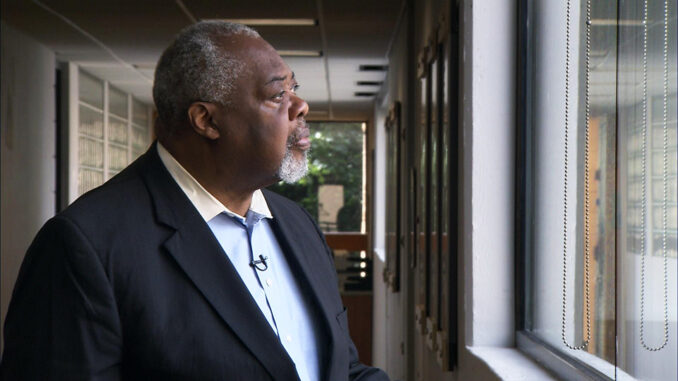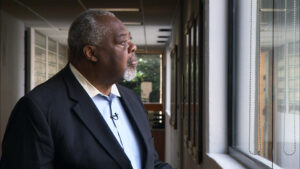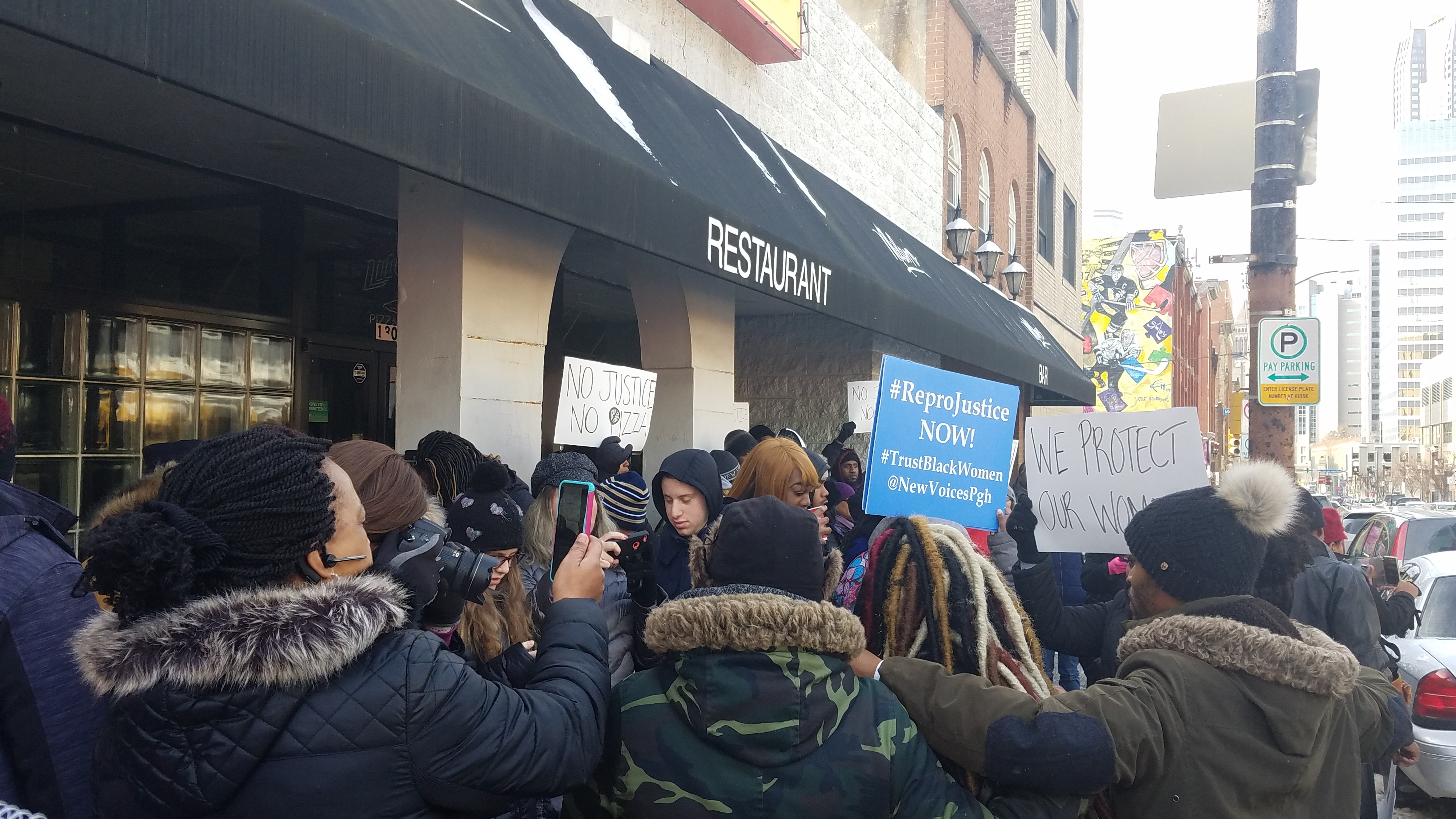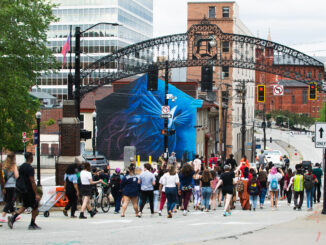

Kellen Stepler | Editor-in-Chief
11/5/2020
A Hill District native, Sala Udin has decades of leadership and social justice activism throughout his career. A Freedom Rider, someone who has marched on Washington and a former city councilperson and current school board member, Udin has spent his life championing for equality. Recently, Udin spoke with Duke editor Kellen Stepler about the 1960s Hill District, the evolution of the Civil Rights Movement and Black media in Pittsburgh.
The conversation with Udin has been edited for brevity and clarity.
Q: Describe what it was like, being there in Washington D.C., on August 28, 1963.
Sala Udin: I had just turned 20. I had never been to Washington D.C., had never participated in a demonstration and had never been in a crowd that gigantic. It was like I was in some kind of fantasyland. Everybody was energized and shouting various slogans and marching; it was unbelievable.
I felt a great sense of empowerment, that I was a part of something huge, and I was a witness to something historical. I felt extremely empowered and included, and proud to have been included in something as historical as that event.
Q: What drove you to be there that day?
Udin: The NAACP Youth Council in Staten Island, New York. That’s where I was living at the time. The youth council was invited to join the adult chapter in this trip to Washington, D.C. I was the chairman of the youth council, and they offered us the opportunity to take some of these seats on the bus that they had not filled. We created a movement among the youth council members; an event to fill those seats. And it was maybe a half-dozen seats. By the time we finished building up the event among the youth council, there were a lot more people who wanted to join the march. There were enough people to fill a second bus.
Q: Describe a 1960s Hill District to someone. What was the Hill District like in the 1960s?
Udin: In the beginning of the ‘60s, it was an ethnically-mixed, working class community just to the east of downtown Pittsburgh; a neighborhood that was home to a lot of new refugees to Pittsburgh. Pittsburgh was one of those locations that they could come to because the word was out that you could get a good paying job, although the work was hard; in coal mines and in steel mills, and in some factories, the work was hard but the pay was good. And so a lot of people who were coming north found their way east over toward Pittsburgh.
It was segregated racially and by class from the rest of the city neighborhoods. It was a self-contained neighborhood. It had most of the things that a neighborhood needed. It had that kind of mix of commercial life and an ethnic mix, and a class mix. There were unemployed, there were street sweepers, there were rubbish men living right amongst dentists, and doctors and nurses and schoolteachers and preachers all lived together in that neighborhood. They worked hard, and they partied hard.
Q: What was the role of the Black press in Pittsburgh in the 1960s?
Udin: Allow me, if you will, to put the car in reverse and go back again to the early part of the 1960s in the Hill District. If we go back to the early 1960s, a very important part of the neighborhood transition was the fact that the city of Pittsburgh was demolishing the lower third of the Hill District neighborhood and displacing 8,000 families and organizations from that neighborhood. There was a lot of mixed feelings about that decision and about that demolition because it was so large and so impactful, and it moved so many people out of the neighborhood and it created, for the first time, racial segregation in housing because a decision had to be made — where do we put these people?
They decided that Black people needed to go in one area and non-Black people needed to go somewhere else. So there was a racial separation in housing availability. But the fact that the city was demolishing the most historic and successful portion of the Hill District neighborhood had a tremendous impact on the rest of the Hill District. That was a significant part of the Hill District reality at that time, from the late ‘50s to the early ‘60s. So if we race ahead to the late 1960s, and the period of 1968, close to Dr. Martin Luther King’s assassination — before the assassination, that period was a period that was in upheaval, as well. The Hill District, like the rest of the African-American community nationwide, was in an uproar about voting rights, about joblessness and poverty, about police brutality and the lack of political empowerment — poor housing, poor healthcare, poor schools.
The African-American community of the Hill District felt that impoverishment and that lack of empowerment very strongly, and fought back very strongly against it. There were demonstrations Downtown for the right to have jobs in places Downtown where we could buy clothes, but we couldn’t work in those clothing stores. The movement for civil rights and justice in the Hill District reflected the movement for civil rights and voting rights among African-Americans and the rest of the country. Those people, and that fight, affected the people of Pittsburgh. The people of Pittsburgh took up that fight here in Pittsburgh, heavily influenced by what was going on around the nation.
There was quite a bit of conflict that created dry grass, and all it needed was a spark. And the assassination of Dr. King was that spark. The assassination of Dr. King was so impactful among people who had never laid eyes on Dr. King, but revered him as their leader and spokesperson for all of the ills that they were fighting for before Dr. King was assassinated. There was a hot movement afoot from the beginning of the ‘60s, all the way up until the late ‘60s.
Q: On April 20, 1968, the Pittsburgh Courier asked on the front page: “Will new King emerge?” Has a new King emerged?
Udin: No. I don’t know that a new King will ever emerge. The world keeps asking the movement of Black Lives Matter: Who’s your leader? And they respond, we are all leaders. We have not identified a single leader because we still feel the pain of your assassination of our single leader, Dr. Martin Luther King, and so many other single leaders. When we identify single leaders, you assassinate them. So we’re going to create a movement that does not have an identified single leader.
Q: How have public protests for social justice issues changed or morphed over time?
Udin: The fact that they are organized horizontally rather than vertically. And the leadership is dispersed more horizontally than vertically.
The fight also became part of the global fight of African-Americans and Third World people of color all over the world. People identified pockets of struggle in various places around the world, and started to reach out and form connections with those movements around the world. They reached out here within the United States to include relationships of struggle with Latinos, with women, with anti-war protestors, with LGBTQI advocates, with indigenous populations. The movement was no longer just African-American, it was a human rights span and scope.
Q: What are your earliest memories of the Black press, and how influential was that on your life?
Udin: When I was in my early teens, I was a paperboy for the Pittsburgh Courier. I used to go every Thursday after school to the Courier’s office, pick up a bunch of newspapers and hustle those newspapers in the street, calling out, “Courier! Courier! Pittsburgh Courier!” The role of the Courier was to reflect social, cultural, political, business life, athletic life, society pages, and reflected the fullness of Black social life in Pittsburgh — a week late. So whatever happened this week, you could probably find it in next week’s Courier. But a week late didn’t bother anybody because at least it got into a newspaper. And if you had enough consciousness to care about what was going on in the community, every week you’d grab the Courier, and you’d read it and know what was going on among Black people not only in the Hill District, but throughout the city of Pittsburgh and throughout the nation. The white media didn’t cover what was going on in the Black community, and if they did cover something, it was probably a violent incident, and they covered it from the perspective of the way they see the Black community. So if you want to know what really happened, you had to read the Courier.




